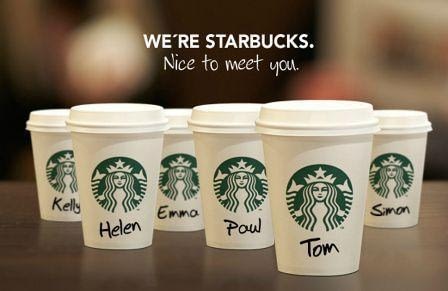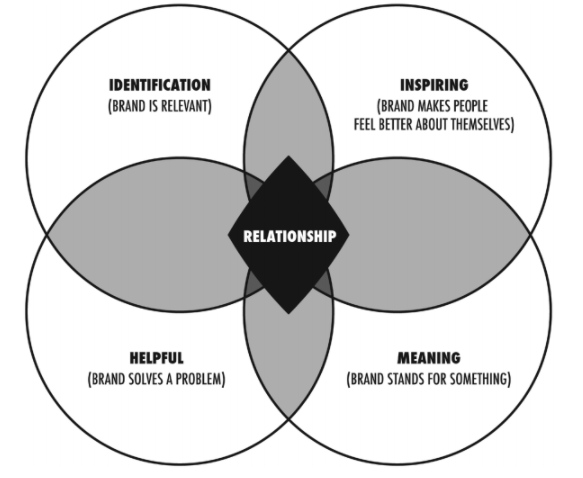Introduction
For decades, a 30‐second TV spot has been able to solve most of the marketing challenges a brand could face. Mass media monopole, coupled with big advertising spendings was enough to drive sales. Today, things have radically changed. Consumers are harder to reach, and classic marketing methods are no more effective.
Why is experiential marketing is b so important in this new economic paradigm? What do we mean exactly by experiential marketing, and how can brands benefit from it?

Introduction

The contextual evolution of experiential marketing
To understand experiential marketing, we need to understand first the evolution of marketing.
Marketing is all about telling stories effectively. For any story to be effective, it must contain the four following elements: the storyteller, the audience, the story, and the medium. The importance given to each one of these components has been disproportionate and influenced by the marketing benchmark standards of each time period.
The old status quo

The more you are seen, the more you sell
The post-industrial revolution has been heavily marked by mass media advertising. The creation of newspaper ads enabled for the first time to reach thousands of people in a single segment. Marketers could spend a budget to buy attention, and directly connect visibility with sales.
The upcoming of the Radio, and then the TV enabled even more people to be reached. It was quickly established that the more you are seen, the more you sell. Marketing became less concerned about the story and the audience, it was all about controlling the medium, and the storyteller.
Using intrusive methods to buy attention
This approach of marketing – buying users attention through interruption – is what is simply called today: outbound marketing. It’s based on “pushing” a message to audiences, regardless if it’s relevant to them, and then relying on volumes to get conversions.
A focus on gaining new customers
The marketing focus was on gaining new customers, as opposed to retaining the existing ones.
3 brand differentiators: price, performance, service
Up until the late ’90s, only three differentiators distinguished companies from one another: price, performance, and service. With time, harsh competition normalized the best marketing campaign practices. Successful brands looked all the same – they used similar logos and similar messages. Yet, some stood out more than the others.
The new status quo
Relationship, the new differentiator
Since the mid-’80s, more and more research and evidence has been pointing out to the importance of relationships in purchase incentives. It was shown that customers were buying from the companies they felt most connected to.
Two key studies have helped establish the importance of relationships in marketing:
- Relationship marketing
Leonard Len Berry (1983) and Barbara Bund Jackson (1985), who were the first marketing scholars to introduce the concept of relationship marketing. This approach came to promote the maintenance of customers through loyal relationship-building, instead of solely focusing on acquiring new ones. This has the benefits of lowering the costs of customer maintenance and driving higher long term returns.
- Collective emotions
American sociologist Erving Goffman (1961) continued the work of the renowned french sociologist, Emile Durkheim, on Aboriginal gatherings in Central Australia, and showed that deep emotional experiences were taking place within gatherings. His work explained the concept of collective emotions, and how strong feelings of togetherness could be created during ceremonial events.

Media fragmentation and the erosion of mass markets
People have more media channel choices than ever: Linkedin, Facebook, Instagram, TikTok, Youtube, Netflix, Podcasts, VR chats, in addition to TV, Radio, newspapers, and the list is yet to grow. This has makes it harder for marketers to target their audiences, as they constantly move between these mediums, and have the decision power to avoid advertising.
Additionally, the mass markets are quickly disappearing. To illustrate it, in the late 90’s Friends was the biggest TV show in the USA, followed by 15 to 20% of all American households. Today, this number is difficult to reach, even for series as popular as Game of Thrones, in the last 10 years.
The marketing mix and the rise of CMO’s
The fragmented marketing channels continued to expand which has made it increasingly challenging for corporations to manage. Direct, advertising, in-store, online marketing, and others were separately managed, sometimes conflicting with each other’s processes, and results. There was a growing need to define the optimal marketing mix a corporation should establish, and many corporations started establishing CMO’s to draw, and manage unified marketing mix strategies.
The emergence of an experience‐based economy
The term “Experience Economy” was first used in an article in 1998 by B. Joseph Pine II and James H. Gilmore. It refers to the next stage of economic development after the service economy, and previously the industrial, and agrarian economies. It predicts that the increasing business competition will lead services to be treated like undifferentiated commodities, making experiences, and the feelings they generate to customers, the new incentive that customers would choose to pay for. It has been an increasingly proven prediction.
The contextual evolution of experiential marketing
The old status quo

The more you are seen, the more you sell
The post-industrial revolution has been heavily marked by mass media advertising. The creation of newspaper ads enabled for the first time to reach thousands of people in a single segment. Marketers could spend a budget to buy attention, and directly connect visibility with sales. The upcoming of the Radio, and then the TV enabled even more people to be reached. It was quickly established that the more you are seen, the more you sell. Marketing became less concerned about the story and the audience, it was all about controlling the medium, and the storyteller.
Using intrusive methods to buy attention
This approach of marketing – buying users attention through interruption – is what is simply called today: outbound marketing. It’s based on “pushing” a message to audiences, regardless if it’s relevant to them, and then relying on volumes to get conversions.
A focus on gaining new customers
The marketing focus was on gaining new customers, as opposed to retaining the existing ones.
3 brand differentiators: price, performance, service
Up until the late ’90s, only three differentiators distinguished companies from one another: price, performance, and service. With time, harsh competition normalized the best marketing campaign practices. Successful brands looked all the same – they used similar logos and similar messages. Yet, some stood out more than the others.
A definition of experiential marketing
It is not easy to find a standarized definition for experiential makreting. The same applies to the term experience.
The following suggested definitions have been inspired by the definition of user experience from the international standard on ergonomics of human-system interaction, ISO 9241-210, and a definition suggested by web solutions, a US-based Web Design & Digital Marketing Agency.
What is an experience?
The sum of perceptions and responses – sensory, emotional, and intellectual – that result from the intentional activities and interactions, or anticipated activities and interactions, a person can have with oneself, other people, nature, products, systems or services.

Experiential marketing
It is common to find experiential marketing also referred to as “engagement marketing”, “on-ground marketing”, “live marketing”, “participation marketing”, “Loyalty Marketing”, or “special events marketing”. We can define it as a creative and memorable experience a brand creates for its participants to connect with them and build a long-lasting relationship.

Examples
Nike Pop-up store - San Francisco
Credit: https://virtulabs.com/portfolio/nike/
For the release of the new Nike Air Foamposite One, Nike created a unique popup store in San Francisco, to make this event a special encounter with its customers.
The shop design reminded Nike’s packaging, and was covered with LED walls enabling a continuous video playback
Share a coke campaign by the Coca-Cola company

In summer 2011, the Coca-Cola company launched a marketing campaign in Australia where it replaced its name with one of the 150 most popular American names. The goal of the campaign was to create a more personal relationship with the consumers, and inspire shared moments of happiness.
Consumers were invited to find bottles with names they related to, share it with their friends, and relatives, as well as on the internet. In that summer alone, Coca-Cola sold more than 250 million bottles in a country with no more than 23 million inhabitants and millions of requests for bottles with personalized names.
Furthermore, the campaign was so successful that it was requested and implemented in more than 70 countries. Some of the consumers used the campaign to express their emotions to people they miss, war veterans for example.
The Bullseye university campaign by Target
To connect with the millennial tech-savvy audience, the Target brand built a custom-designed dorm room in the UCLA campus, where five influencer YouTubers spent 3 days, 24h a day, streaming their experiences. Viewers were able to engage in daily activity, shop back-to-college products featured in the rooms, and win prizes (400 were distributed). The brand was trying to activate itself with Millenials who viewed it as a place where their parents would buy, and the campaign was a real success.
It generated more than 76 million tweets, directly reached over 144,000 students and parents, and was extended to five more university campuses.

The types of brand-customer relationships
Share a coke campaign by the Coca-Cola company
In a survey conducted with more than 5000 participants, over 10 years, Kerry Smith and Dan Hanover – the authors of one of some of the best documented, and comprehensive publications on experiential marketing – identified four types of relationships consumers were establishing with brands. Source: Experiential Marketing: Secrets, Strategies, and Success Stories from the World’s Greatest Brands, by Kerry Smith and Dan Hanover.

from the World's Greatest Brands, by Kerry Smith and Dan Hanover.
Some of the benefits of experiential marketing
- It offers experiences that are desirable by customers and stakeholders, which makes it attractive, contrary to interruption-based approaches.
- It generates higher quality leads by spending more time with prospects initially.
- It drives customer lifetime value by building a relationship with customers and stakeholders, and also accelerates the conversion in the purchase funnel.
- It raises engagement on-site and across all marketing channels.
- It has the potential of becoming viral.
- It creates valuable content that feeds marketing channels.
The new status quo

Relationship, the new differentiator
Since the mid-’80s, more and more research and evidence has been pointing out to the importance of relationships in purchase incentives. It was shown that customers were buying from the companies they felt most connected to.
Two key studies have helped establish the importance of relationships in marketing:
- Relationship marketing
Leonard Len Berry (1983) and Barbara Bund Jackson (1985), who were the first marketing scholars to introduce the concept of relationship marketing. This approach came to promote the maintenance of customers through loyal relationship-building, instead of solely focusing on acquiring new ones. This has the benefits of lowering the costs of customer maintenance and driving higher long term returns.
- Collective emotions
American sociologist Erving Goffman (1961) continued the work of the renowned french sociologist, Emile Durkheim, on Aboriginal gatherings in Central Australia, and showed that deep emotional experiences were taking place within gatherings. His work explained the concept of collective emotions, and how strong feelings of togetherness could be created during ceremonial events.
Media fragmentation and the erosion of mass markets
The marketing mix and the rise of CMO’s
The emergence of an experience‐based economy
A definition of experiential marketing
It is not easy to find a standarized definition for experiential marketing. The same applies to the term experience.
The following suggested definitions have been inspired by the definition of user experience from the international standard on ergonomics of human-system interaction, ISO 9241-210, and a definition suggested by web solutions, a US-based Web Design & Digital Marketing Agency.
What is an experience?

We can define it as the sum of perceptions and responses – sensory, emotional, and intellectual – that result from the intentional activities and interactions, or anticipated activities and interactions, a person can have with oneself, other people, nature, products, systems or services.
Experiential marketing
It is common to find experiential marketing also referred to as “engagement marketing”, “on-ground marketing”, “live marketing”, “participation marketing”, “Loyalty Marketing”, or “special events marketing”.
We can define it as a creative and memorable experience a brand creates for its participants to connect with them and build a long-lasting relationship.

Examples of experiential marketing campaigns
Nike Pop-up store - San Francisco
Credit:https://virtulabs.com/portfolio/nike
Share a coke campaign by the Coca-Cola company

The Bullseye university campaign by Target

The types of brand-customer relationships

In a survey conducted with more than 5000 participants, over 10 years, Kerry Smith and Dan Hanover – the authors of one of some of the best documented, and comprehensive publications on experiential marketing – identified four types of relationships consumers were establishing with brands.
Some of the benefits of experiential marketing
- It offers experiences that are desirable by customers and stakeholders, which makes it attractive, contrary to interruption-based approaches.
- It generates higher quality leads by spending more time with prospects initially.
- It drives customer lifetime value by building a relationship with customers and stakeholders, and also accelerates the conversion in the purchase funnel.
- It raises engagement on-site and across all marketing channels.
- It has the potential of becoming viral.
- It creates valuable content that feeds marketing channels.
Conclusion
Marketing approaches relying on interruption, and mass users are becoming less and less effective, as the mass markets are eroding, and the media platforms getting more and more fragmented.
Building a long term relationship with customers is becoming a core differentiator and a requirement for success in the advent of the new experience economy.
Raising customer lifetime value, attracting customers, generating high-quality leads, and driving engagement throughout all marketing channels, are some of the most important benefits of experiential marketing.
Conclusion
Marketing approaches relying on interruption, and mass users are becoming less and less effective, as the mass markets are eroding, and the media platforms getting more and more fragmented.
Building a long term relationship with customers is becoming a core differentiator and a requirement for success in the advent of the new experience economy.
Raising customer lifetime value, attracting customers, generating high-quality leads, and driving engagement throughout all marketing channels, are some of the most important benefits of experiential marketing.
References
[1] Berry, L. L. (1995), Relationship marketing of services—growing interest, emerging perspectives, Journal of the Academy of marketing science, 23(4), 236-245.
[2] Kerry Smith, Dan Hanover, (2016), “Experiential Marketing: Secrets, Strategies, and Success Stories from the World’s Greatest Brands“, John Wiley & Sons.
[3] Larry Myler, June 08, 2016, Forbes, “Acquiring New Customers Is Important, But Retaining Them Accelerates Profitable Growth”, https://www.forbes.com/sites/larrymyler/2016/06/08/acquiring-new-customers-is-important-but-retaining-them-accelerates-profitable-growth/#4d6415a66671
[4] Fred Reichheld. March 06, 2006, Bain & Company “A satisfied customer isn’t enough”, https://www.bain.com/insights/a-satisfied-customer-isnt-enough/
[5] Andrew Waber, March 02, 2018. Marketing Land, “The death of the mass market and why consumers couldn’t be happier”, https://marketingland.com/death-mass-market-consumers-couldnt-happier-235297
[6] Coca-Cola Australia, “What was the ‘Shake a Coke’ campaign?“, https://www.coca-colacompany.com/au/faqs/what-was-the-share-a-coke-campaign
[7] Evan Tarver, September 24, 2019. Investopedia, “Why the ‘Share a Coke’ Campaign Is So Successful”, https://www.investopedia.com/articles/markets/100715/what-makes-share-coke-campaign-so-successful.asp
[8] The Pineapple Agency, “Why Target’s #BullseyeU Experiential Campaign Worked”, https://wearepineapple.co/why-targets-bullseyeu-experiential-campaign-worked/
References
1] Berry, L. L. (1995), Relationship marketing of services—growing interest, emerging perspectives, Journal of the Academy of marketing science, 23(4), 236-245.
[2] Kerry Smith, Dan Hanover, (2016), “Experiential Marketing: Secrets, Strategies, and Success Stories from the World’s Greatest Brands“, John Wiley & Sons.
[3] Larry Myler, June 08, 2016, Forbes, “Acquiring New Customers Is Important, But Retaining Them Accelerates Profitable Growth”, https://www.forbes.com/sites/larrymyler/2016/06/08/acquiring-new-customers-is-important-but-retaining-them-accelerates-profitable-growth/#4d6415a66671
[4] Fred Reichheld. March 06, 2006, Bain & Company “A satisfied customer isn’t enough”, https://www.bain.com/insights/a-satisfied-customer-isnt-enough/
[5] Andrew Waber, March 02, 2018. Marketing Land, “The death of the mass market and why consumers couldn’t be happier”, https://marketingland.com/death-mass-market-consumers-couldnt-happier-235297
[6] Coca-Cola Australia, “What was the ‘Shake a Coke’ campaign?“, https://www.coca-colacompany.com/au/faqs/what-was-the-share-a-coke-campaign
[7] Evan Tarver, September 24, 2019. Investopedia, “Why the ‘Share a Coke’ Campaign Is So Successful”, https://www.investopedia.com/articles/markets/100715/what-makes-share-coke-campaign-so-successful.asp
[8] The Pineapple Agency, “Why Target’s #BullseyeU Experiential Campaign Worked”, https://wearepineapple.co/why-targets-bullseyeu-experiential-campaign-worked/
